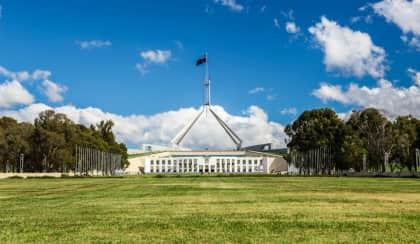Budget schemes may fall short of the property mark, experts warn
Despite being loaded with schemes targeting housing relief, the first full-year budget of the Albanese government delivered by Federal Treasurer Jim Chalmers failed to hit the mark for some.

While Mr Chalmers’ budget, delivered on Tuesday evening (9 May), was not littered with housing schemes as was the case with the mini-budget he handed down in October, it still provided initiatives aimed at supporting the Australian property market.
Included in the budget was an increase to Commonwealth Rent Assistance (CRA), noted as the largest such increase in over three decades, which would see private market and community housing renters afforded an extra $31 a fortnight as part of the scheme.
Even as this announcement looks to provide some semblance of financial relief for Australian renters, who’ve battled soaring rents for over 12 months, Arjun Paliwal, head of research and founder at InvestorKit, noted this may not be enough to ease the nation’s rental pain.
His sentiments were shared by CoreLogic Australia’s head of research, Eliza Owens, who labelled the increase as “modest,” conceding that the delayed onset of increased national housing supply, mixed with “no ceiling on rent increases for private landlords [means] there is a greater risk of these income supplements simply putting further upward pressure on rents.”
Mr Paliwal said, “Supplementing low-income households with extra funds may seem like a step in the right direction, however, it’s worrying that it may not be enough to cover the increased cost of rent.”
“Hopefully, there will be more comprehensive solutions put forward to address this issue,” he said.
Ms Owens has suggested a potentially costlier and more complex solution to the CRA’s gaps would be to index it against rent increases instead of inflation, before adding, “Ideally, CRA increases would be complemented by better targeting of the scheme to households at higher risk of rental stress.”
“There need to be more short-term public housing solutions, given how severe migration is coming through,” he said. The budget forecasts an influx of 650,000 migrants over the course of the current financial year and 2024–2025.
“Rents have increased substantially more than what people are receiving in benefits,” the expert said, before adding, “Even though the new budget announced a $2 billion increase to social housing, it is well below the market of where we should be as a nation.”
As part of the budget, the Albanese government announced an increase to the government-guaranteed liability cap of the National Housing and Finance Investment Corporation (NHFIC) by $2 billion, while also doubling down on an expansion of the Home Guarantee Scheme proposed earlier this month.
Ms Owens explained these changes “make these policies fairer,” but conceded it may not “make them more effective.”
Buyer’s advocate, Amy Lunardi, believes the latest expansion will be welcome, but noted buyers looking to unlock its uses should consider the implications of taking a loan out, particularly in the present turbulent property climate.
“For example, if property prices fall, you could find yourself in a negative equity solution, meaning you owe the bank more than the property is worth. And, if interest rates continue to rise, you may not be able to afford your mortgage repayments,” she said.
This week’s federal budget also included several schemes targeting the bustling build-to-rent (BTR) sector, notably the halving of the managed investment trust withholding tax from 30 per cent to 15 per cent.
Ms Owens believes this scheme, in addition to raising the depreciation rate from 2.5 per cent to 4 per cent, has been enacted to make investment in the BTR sector “more attractive.”
She explained joint research by accounting firm EY and the Property Council of Australia (PCA) argued this could boost the housing supply by up to 150,000 apartments over the next decade.
Ms Lunardi said, “These measures are welcome,” but added, “Housing affordability remains a challenge for many young people, especially with rising rents and the cost of living.”
“While the National Housing Accord has promised to deliver one million homes, more than 700,000 migrants are expected to move to Australia by the end of next year, further putting pressure on the housing and rental market in the short term,” she said.
While she believes the measures outlined in the budget provide buyers with options, she believes they won’t have much impact on sentiment, with interest rates, inflation, and the cost of living likely to have a greater impact on buyer sentiment in the near term.
Extending her vision to the long term, Mr Lunardi said the National Housing Accord may improve sentiment but concluded that “critics are suggesting the goals of the Accord may not be ambitious enough.”
